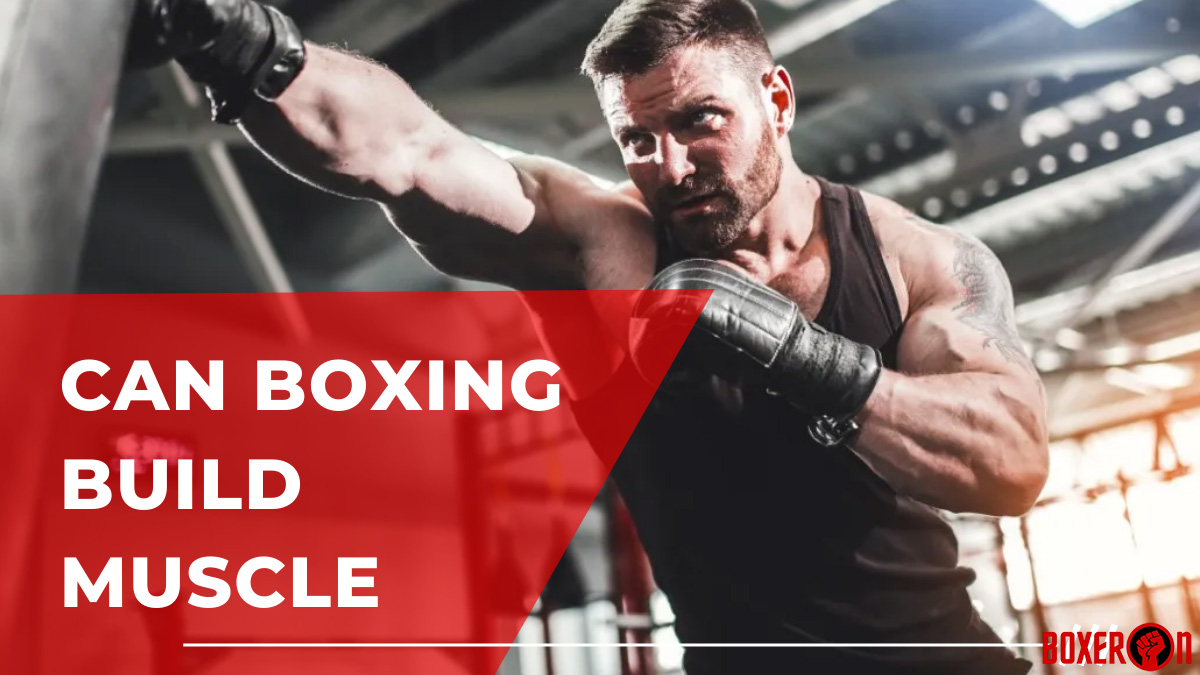Boxing, known for its intense workouts and high-energy punches, has long been revered as a top-tier cardiovascular exercise. Many perceive it as primarily a means of achieving peak cardio fitness and honing agility rather than building muscle mass. However, beneath its surface lies a realm of potential for muscle growth. In this article, we delve into the question: Can boxing build muscle for you?
Can Boxing Build Muscle?
Can boxing actually build muscle? The answer depends… But in general, yes, boxing does help you build muscle, to some extent.
Muscle growth, scientifically speaking, relies on principles like progressive overload and mechanical tension, which may not be the primary focus of boxing routines. The effectiveness of boxing in muscle building hinges on several crucial factors, including individual training goals, the intensity of workouts, and dietary habits.
It’s essential to distinguish between muscle mass and muscular endurance/power, as boxing tends to prioritize the latter.
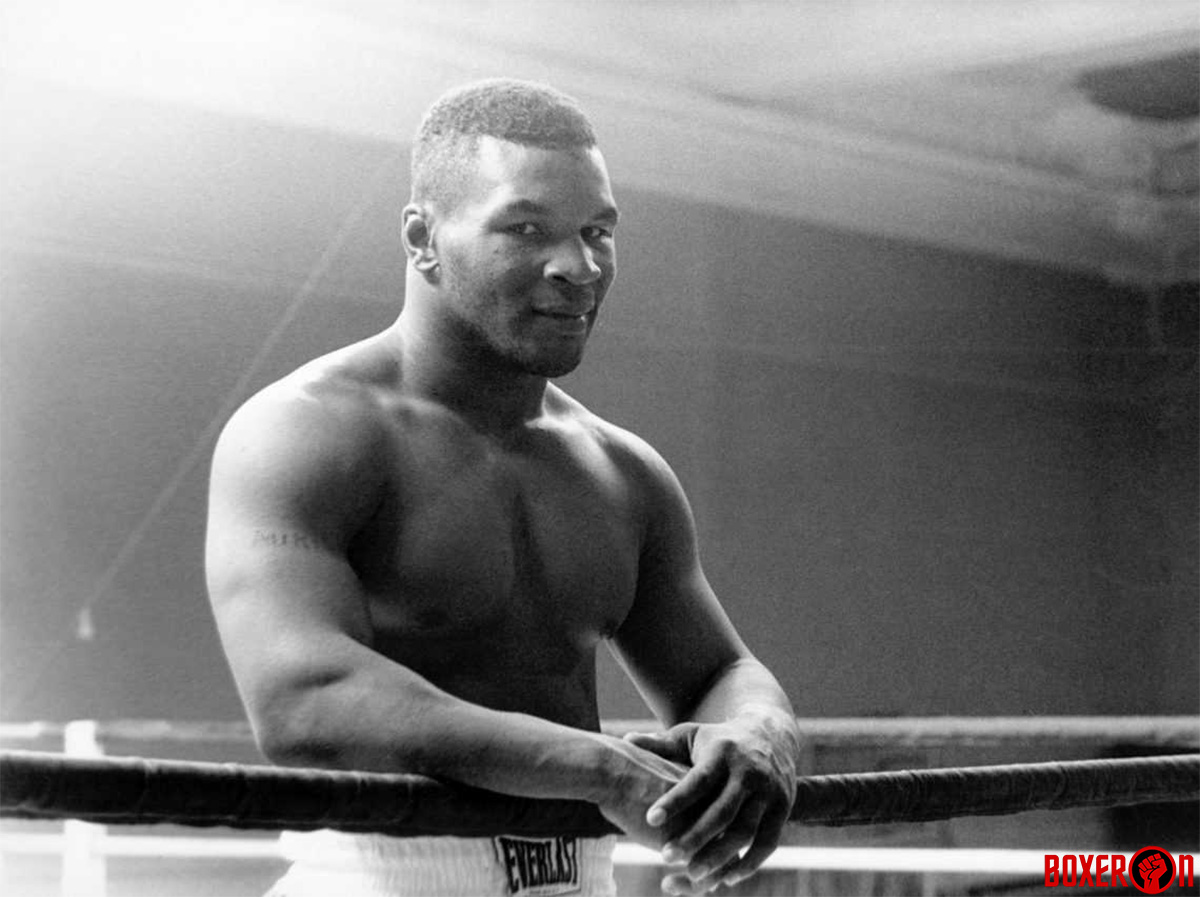
How Boxing Help You Builds Muscle
Combine all of these points below would help you have a better understand on how boxing facilitates muscle building, even when it’s not the primary focus:
Full-body workout
Boxing is renowned for its ability to engage multiple muscle groups simultaneously. Unlike isolated exercises that target specific muscles, boxing movements such as jabs, hooks, and uppercuts require coordination and activation of various muscles throughout the body.
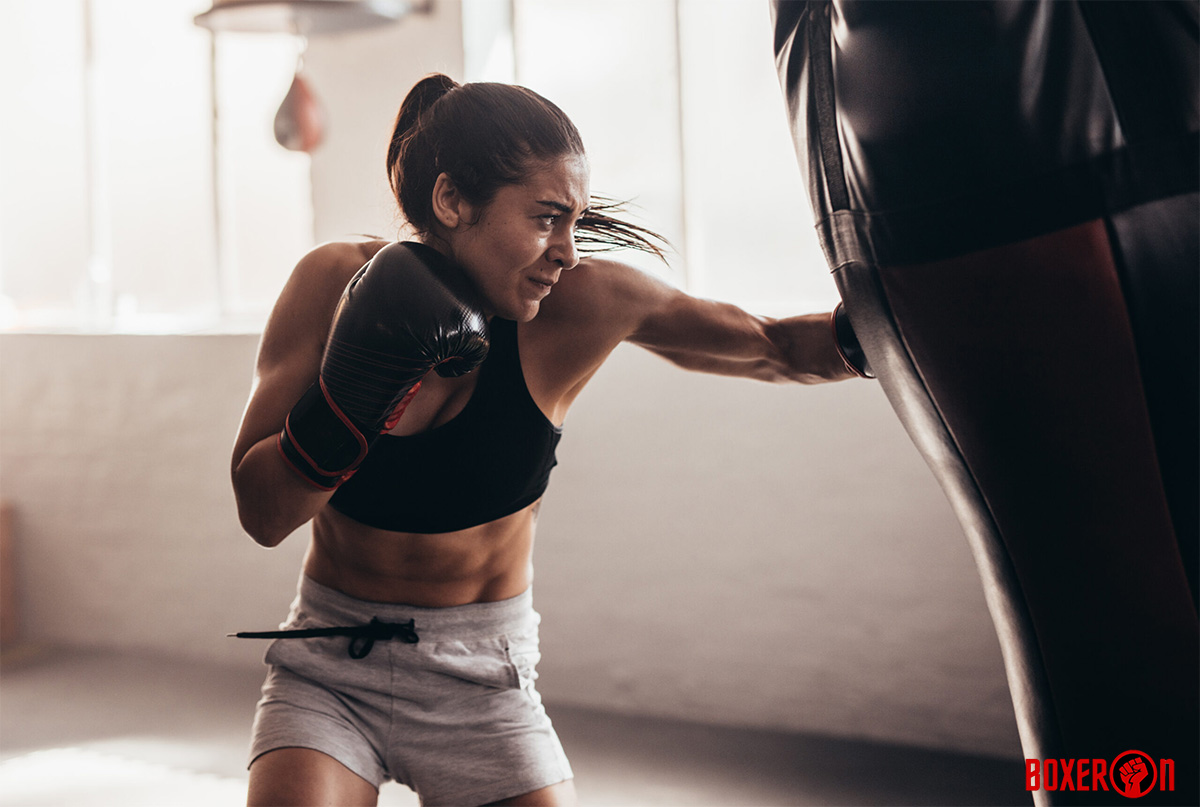
For instance, throwing a punch engages not only the arm muscles but also recruits muscles in the shoulders, chest, back, and core to generate power and maintain balance. Additionally, defensive movements like blocking and dodging involve dynamic shifts in body position, further activating muscles in the legs, hips, and torso.
By incorporating a wide range of movements, boxing offers a comprehensive workout experience that promotes overall muscle development.
Dynamic movements
Boxing requires quick and forceful contractions of muscles to execute punches and defensive maneuvers efficiently. These dynamic movements involve both concentric (muscle shortening) and eccentric (muscle lengthening) contractions, which are key stimuli for muscle growth.
Over time, consistent practice of explosive movements in boxing can lead to improvements in muscle power, enabling individuals to generate greater force with each punch while enhancing their ability to sustain high-intensity activity for longer durations.
Bodyweight exercises
Boxing heavily relies on bodyweight resistance for strength training. Punches, footwork, and core engagement all require individuals to move their own body weight against gravity, effectively serving as resistance exercises.
For instance, throwing punches involves the extension and contraction of arm muscles against resistance, while footwork drills demand lower body strength and agility to maneuver swiftly around the ring.
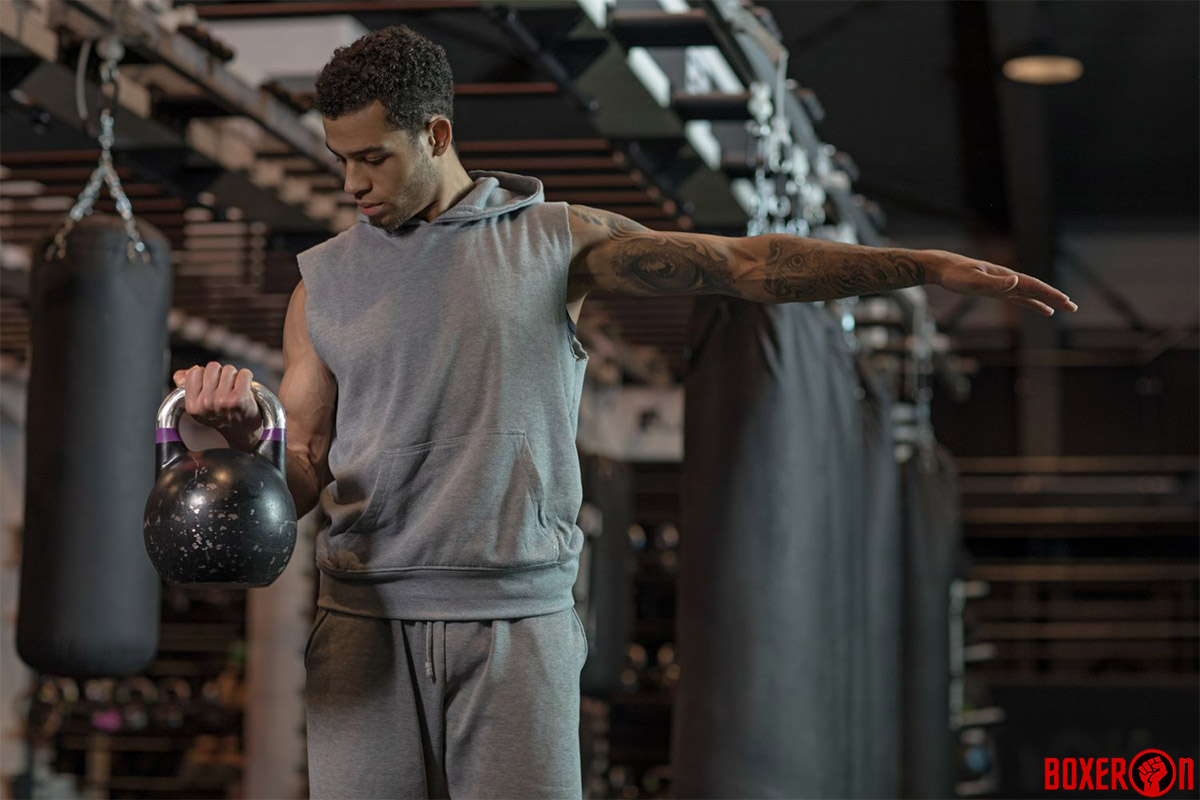
Additionally, maintaining proper form and balance during boxing stances and defensive maneuvers engages the core muscles, promoting stability and strength throughout the torso. By leveraging bodyweight resistance, boxing fosters muscle development without the need for external weights or equipment.
High-intensity interval training (HIIT)
Boxing training typically follows a high-intensity interval format, alternating between periods of intense activity and rest. This style of training is highly conducive to muscle growth as it promotes metabolic stress, a key factor in stimulating muscle hypertrophy.
During intense boxing rounds, muscles undergo repeated cycles of contraction and relaxation, leading to micro-tears in muscle fibers. Subsequent rest periods allow for recovery and adaptation, facilitating muscle repair and growth.
Moreover, the cardiovascular demands of HIIT-style boxing workouts enhance blood flow to working muscles, delivering oxygen and nutrients essential for muscle recovery and growth. By integrating HIIT principles, boxing effectively stimulates muscle growth while improving overall cardiovascular fitness.
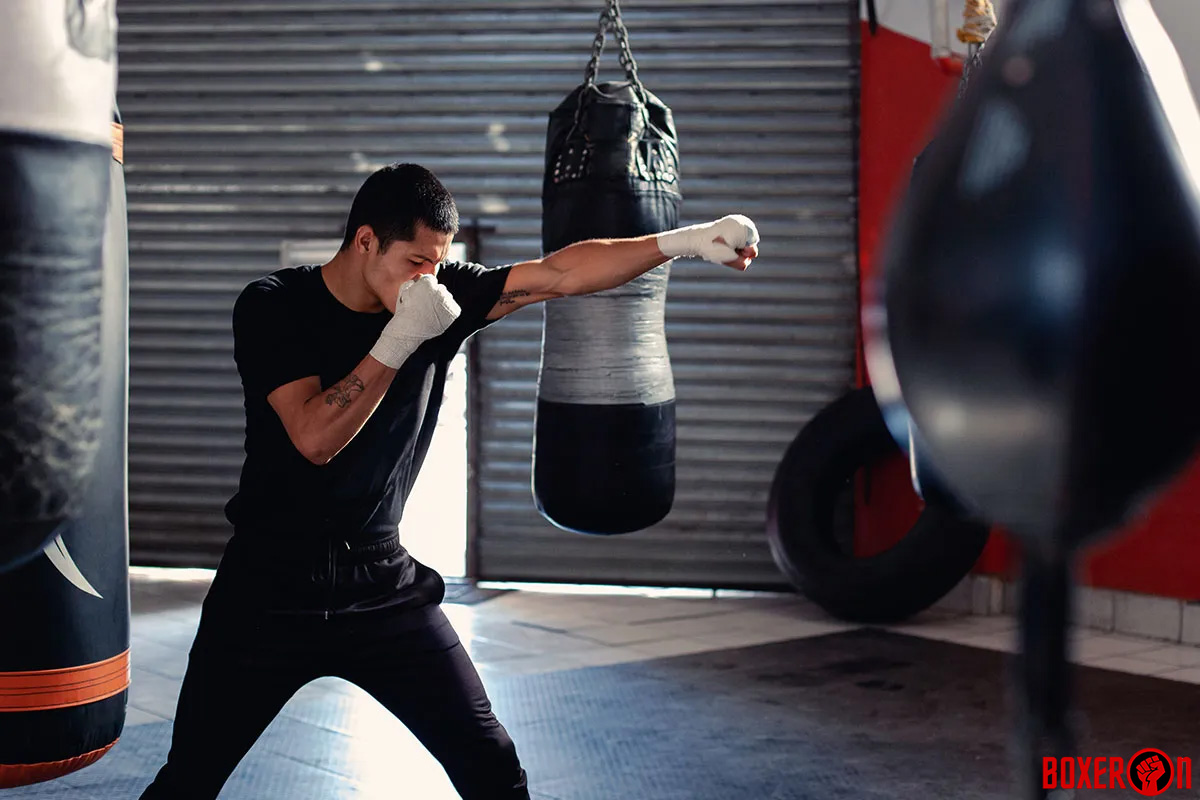
Muscle Building With Boxing and It’s Limitations
While boxing offers numerous fitness benefits, including improved cardiovascular health, endurance, and overall athleticism, it’s essential to recognize its limitations concerning muscle building:
Emphasis more on endurance and agility
Boxing training is primarily geared towards enhancing endurance, agility, and speed, rather than maximizing muscle size.
While traditional bodybuilding focuses on lifting heavy weights to induce muscle hypertrophy, boxing emphasizes quick, explosive movements and sustained cardiovascular exertion. As a result, the training protocols in boxing prioritize exercises and drills that improve aerobic and anaerobic capacity, footwork, reflexes, and agility.

Limited progressive overload
Progressive overload, the gradual increase in resistance or intensity over time, is a fundamental principle for muscle adaptation and growth. However, boxing primarily relies on bodyweight exercises and skill-based drills, making it challenging to progressively overload muscles in the same way as traditional weightlifting.
While individuals can increase the difficulty of boxing workouts by incorporating faster-paced drills, heavier gloves, or more complex combinations, the scope for progressive overload may be limited compared to resistance training with weights. Muscle mass gains from boxing may plateau over time without sufficient variations in training stimuli.
Not ideal for bulking
Unlike bodybuilding, which often focuses on achieving significant muscle bulk and hypertrophy, boxing training typically aims for functional strength and lean muscle mass. Boxers prioritize agility, speed, and power, which require a favorable strength-to-weight ratio rather than sheer muscle size.
Additionally, excessive muscle bulk can hinder mobility and agility, factors critical for success in boxing competitions. Because of that, boxing training emphasizes body composition and muscle quality over sheer size, favoring a lean and athletic physique.
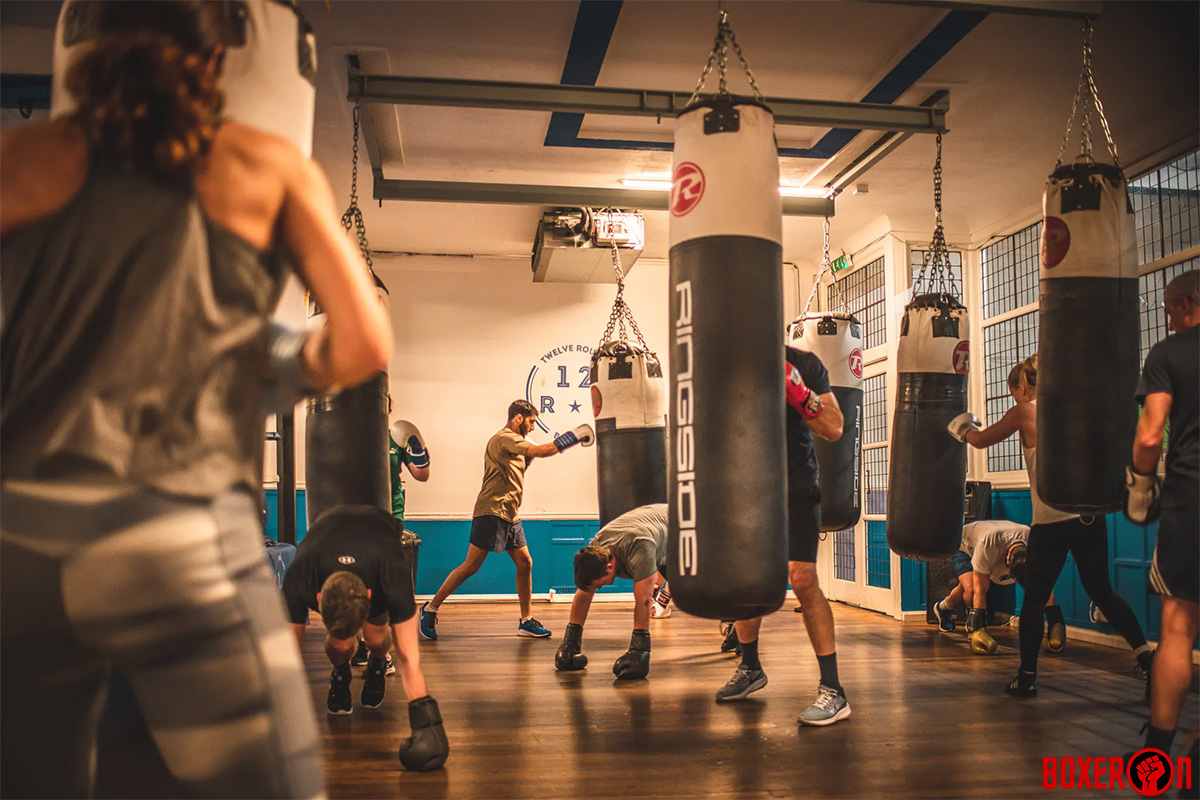
Should You Box for Muscle Building?
While boxing can contribute to muscle development, it may not be the most efficient route to achieving significant muscle mass gains compared to other dedicated methods like weightlifting or resistance training programs. The decision to box for some gain or not should align with one’s goals and preferences.
If you want to build your body and archive that Greek God status fast, better look else where. But if you seek a well-rounded approach that includes cardiovascular conditioning, agility enhancement, stress relief, and skill development, adding boxing into your daily activity routine is the right choice for you.

While boxing may not be the sole solution for muscle building, its diverse benefits make it a valuable addition to any comprehensive fitness program. Whether you’re striving to build muscle, improve endurance, or simply have fun while staying active, boxing offers a dynamic and rewarding path to fitness and well-being.

